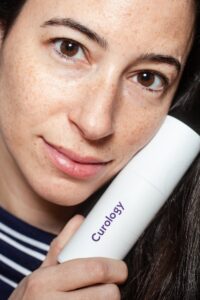
A smooth, glowing complexion is a universal symbol of health, and yet, achieving it often feels like a never-ending quest filled with trial and error. One secret to success lies in understanding the ingredients in your skincare products. This comprehensive guide, based on scientific evidence, will help you decipher the complex world of skincare ingredients.
Table of Contents
- Understanding Skin Care Ingredients
- Alphabetical Guide to Ingredients
- A-D: From Alpha Hydroxy Acid to Dimethicone
- E-K: From Emollients to Kojic Acid
- L-P: From Lactic Acid to Polyhydroxy Acids
- R-Z: From Retinol to Zinc Oxide
- Decoding Ingredient Labels
- Evidence-Based vs. Emerging Evidence
- Ingredients to Avoid
- Natural vs. Synthetic Ingredients
- Skin Type and Ingredient Choice
- Final Words
Understanding Skin Care Ingredients
A trip down the skincare aisle can seem like a visit to a chemistry lab. Products bristle with a bewildering array of ingredients, each with a unique role in skin health. Understanding these ingredients can empower you to make informed decisions for your skin’s unique needs.
Alphabetical Guide to Ingredients
We’ve enlisted the help of scientists and skincare experts to compile a comprehensive guide to some of the most common skincare ingredients. We’ve broken them down alphabetically for easier navigation.
A-D: From Alpha Hydroxy Acid to Dimethicone
Alpha Hydroxy Acid (AHAs)
Evidence-based: Yes
AHAs are water-soluble substances derived from plants and animals. They are used in skincare products to smooth wrinkles, improve texture, and cleanse the skin. However, they can increase sun sensitivity and may cause skin reactions.
Dimethicone
Evidence-based: Yes
Dimethicone is a type of silicone used in skincare products to prevent other ingredients from separating. It can also provide moisture to the skin and hair and prevent signs of aging.
E-K: From Emollients to Kojic Acid
Emollients
Evidence-based: Yes
Emollients are substances that soften and smooth the skin by filling in the spaces between skin flakes. They are commonly found in moisturizers, creams, and lotions.
Kojic Acid
Evidence-based: Evidence is emerging
Derived from several types of fungi, Kojic acid is used in skincare products for its potential to brighten the skin and reduce pigmentation.
L-P: From Lactic Acid to Polyhydroxy Acids
Lactic Acid
Evidence-based: Yes
Lactic acid is an AHA often found in skincare products for its exfoliating and hydrating properties.
Polyhydroxy Acids (PHAs)
Evidence-based: Yes
PHAs are a newer type of AHA used in skincare products for their exfoliating properties. They can also help the skin retain moisture.
R-Z: From Retinol to Zinc Oxide
Retinol
Evidence-based: Yes
Retinol is a derivative of Vitamin A. It’s used in skincare products for its anti-aging properties and its ability to treat acne.
Zinc Oxide
Evidence-based: Yes
Zinc Oxide is a mineral often found in sunscreens. It forms a protective barrier on the skin, preventing harmful UV rays from penetrating and damaging skin cells.
Decoding Ingredient Labels
Knowing the ingredients in your skincare products is essential, but understanding how to read the labels is equally important. Ingredients are generally listed in descending order of concentration. However, ingredients present at concentrations of less than 1% can be listed in any order.
Evidence-Based vs. Emerging Evidence
When considering skincare ingredients, it’s essential to differentiate between those that are evidence-based (proven effective in scientific studies) and those with emerging evidence (showing promise but requiring more research).
Ingredients to Avoid
While many ingredients benefit the skin, others might cause harm. For instance, the FDA prohibits certain ingredients like bithionol and mercury compounds due to their potential to cause skin disorders or toxicity.
Natural vs. Synthetic Ingredients
Both natural and synthetic ingredients have their place in skincare. Natural ingredients come from plants and animals, while synthetic ingredients are made in a lab. Both types can be safe and effective, but it’s essential to note that “natural” doesn’t always mean “better” or “safer.”
Skin Type and Ingredient Choice
Your skin type plays a significant role in determining which skincare ingredients will work best for you. For example, if you have oily skin, you might benefit from ingredients that control oil production, like salicylic acid.
Final Words
Understanding skincare ingredients is a crucial step towards achieving healthy skin. By making informed choices, you can find products that effectively address your skin’s unique needs. Remember, what works for one person might not work for another, so don’t be afraid to experiment and find what works best for you.
Always consult a dermatologist or skincare professional if you have concerns about your skin or aren’t sure which products to use.
Last medically reviewed on September 1, 2024
Written By: [Your Name]
Edited By: [Editor’s Name]
Medically Reviewed By: [Medical Reviewer’s Name]
Fact Checked By: [Fact Checker’s Name]
Copy Edited By: [Copy Editor’s Name]
Updated on September 1, 2024
















+ There are no comments
Add yours